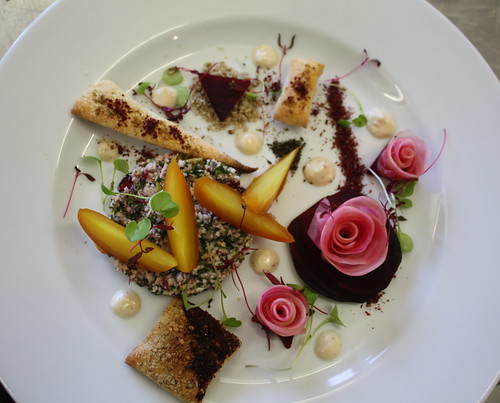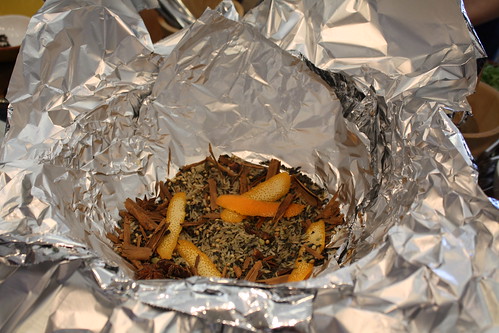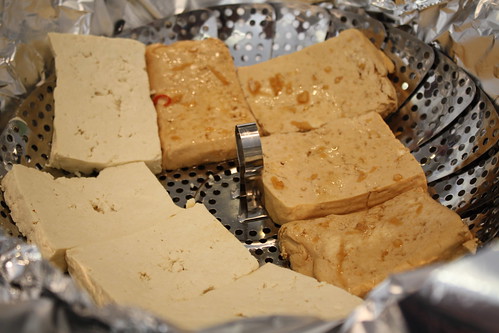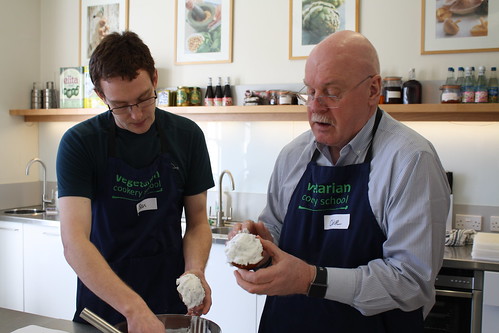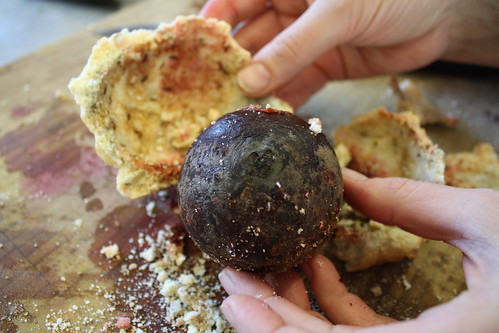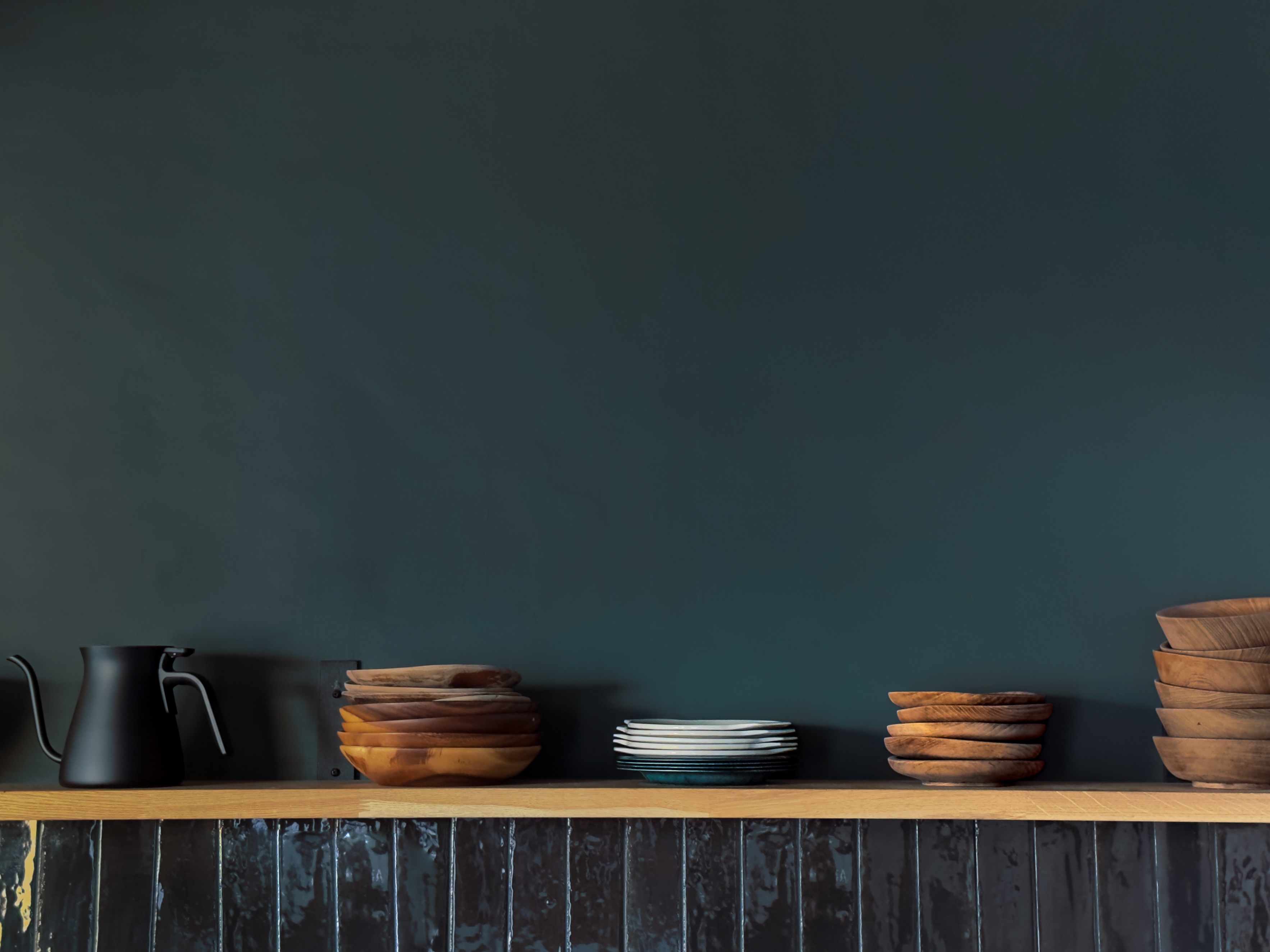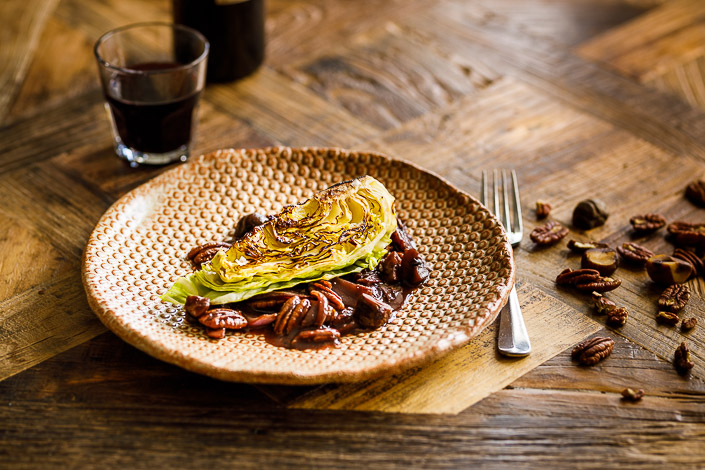Creative Cookery Masterclass

Our new Creative Cookery course took place last weekend after lots of requests from customers for more restaurant style dishes and techniques. The course really excited us because it meant that we could share the more creative and experimental cookery techniques which we love but often don’t include in classes because they are time consuming or less practical for day to day cookery.
A few of the techniques we covered include tea smoking, spherification and salt baking. Now, we know these methods are probably not something you'll be using after a long day at work! But for dinner parties or special meals it is great to know how to do these techniques at home and how to plate up dishes which are restaurant quality. The focus for all of our dishes during the day was to use innovative cookery techniques and also to focus on presentation: how to create something which tastes as good as it looks.
The tutors at The Vegetarian Cookery School are mainly artists by training and appreciate the importance of creativity, enjoying and exploring the creative process and also creating dishes which are visually and stunning and multi-sensory. This class was led by Jo Ingleby and Helen Lawrence who had both worked as Head Chef of Demuths restaurants for many years but who also work as artists on a variety of creative projects.
The day focused on seasonal vegetables as the stars of the show. We used pink rhubarb, beetroot, kale, cavolo nero and cauliflower as well as lots of herbs and micro herbs and pea shoots.
We are often asked how to cook tofu, a food we love but is often badly cooked and lacking in taste in recipes or restaurants. Tea smoking is an exciting process that can elevate tofu from its notoriously bland reputation. Our method requires no more complicated kitchen equipment than a wok and silver foil. We filled the base of a foil lined wok with a fragrant mixture of whole spices such as coriander, cinnamon, cumin and star anise as well as loose green tea, rice and sugar and placed a small metal grill on top.
The tofu was placed in thick slices on the grill and the whole lot was tightly wrapped in more foil, being careful not to leave any gaps where the smoke would escape. After a good ten minutes of full heat the wok is then left to stand and the smoke which has been created inside infuses the tofu. We tried the technique with both plain and marinated tofu which had been submerged in a mixture of ginger juice, shoyu, chilli and water. After smoking we left half of the tofu “raw” and fried the rest to see which type people liked. The verdict was mixed as everyone loved both the raw and the fried tofu. The strong but fragrant smoke flavour is miles better than commercially bought smoked tofu.
We served the smoked tofu with one of the most fun and experimental cookery techniques of recent years: spherification. This was pioneered by Ferran Adria at El Bulli in 2003 and since then has been a staple for Michelin restaurants and Master Chef contestants. It is now easy to buy the necessary minerals needed to try spherification at home over the internet and it is a great thing to experiment with at home. Spherification utilises the chemical reaction which occurs when Sodium Alginate comes into contact with Calcium Chloride. A thin skin is formed and the liquid is trapped within.
To form spheres you first create a liquid which can be vegetable or fruit based and then add a measured amount of Sodium Alginate. In a large container the Calcium Chloride is mixed with mineral water and then the fun begins! Using pipettes or syringes you slowly drip the alginate mixture into the calcium bath and tiny caviar sized balls form which explode in your mouth when you eat them. Our “caviar” was a pea puree, which we spiced up with a generous amount of wasabi - a real taste sensation!
To bring this starter together we also made a simple Japanese style pickling syrup with rice vinegar and palm sugar and lightly pickled strips of cucumber, slivers of candy striped beetroot and Arame seaweed. We also made Kale Chips from fresh curly kale and Japanese Shichimi seasoning to bring some crunch to the dish.
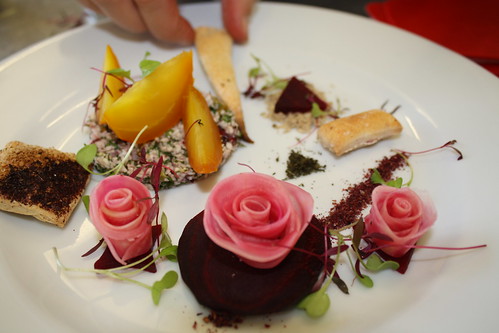
Preparation for the main course began with making a salt crust for baking our beetroo. The salt crust is made by whisking egg whites and mixing this with lots of salt. We also added cumin seeds for added flavour.
Salt baking is an ancient technique, which is more commonly used for cooking meat and fish but lends itself well to baking hard dense vegetables such as beetroot, celeriac, turnips and parsnips.
The salt coating becomes solid in the oven and completely seals the vegetable making, in effect, a mini oven, which traps in the steam and also accentuates the flavour of the sugars which naturally occur in the vegetables. Salt crust making is really hands on and fun, basically making vegetables snowballs! These are then roasted in a hot oven for about an hour after which the hard shell can be cracked off, either dramatically at the table or carefully in the kitchen.
The cooked beetroot was incredibly sweet, didn’t taste of salt and tasted intensely “beetrooty”. We used the beetroot as the centre piece of a Middle Eastern inspired main course with Cauliflower Tabbouleh which is made by finely chopping raw cauliflower in a food processor and adding copious amounts of fresh herbs and pomegranate seeds-a perfect wheat free salad which looks and tastes impressive on a beautiful dinner plate, but is equally happy as a packed lunch the next day. We also made Air Breads, tiny pillows of puffed bread, which are completely hollow and begging to be filled with the tabbouleh and a tangy almond and garlic sauce.
No restaurant meal is complete without a grand finale pudding and ours was a real winner-a rich “Molecular” chocolate mousse with sugar work baskets, rhubarb agar agar gel as well as roasted rhubarb and raspberry and rhubarb coulis. The mousse is a Demuths classic which evolved from a recipe created by the father of Molecular Gastronomy, Hervé This. He suggested making a mousse by adding boiling water to broken dark chocolate, letting this cool quickly and the whipping the mixture rapidly to form a rich, pure and vegan chocolate mousse without adding cream or eggs. We flavoured the chocolate with a syrup of spices and then formed it into perfect quenelles. Helen Lawrence is our queen of sugar work and she showed the group how to master the delicate art of making sugar baskets, praline, candy floss and shards.
This day was exciting for us to teach and really put our artistic flair to the test-as well as the creativity of our students. Our next Creative Cookery Masterclass is in April If you would be interested in finding out more or coming along.

